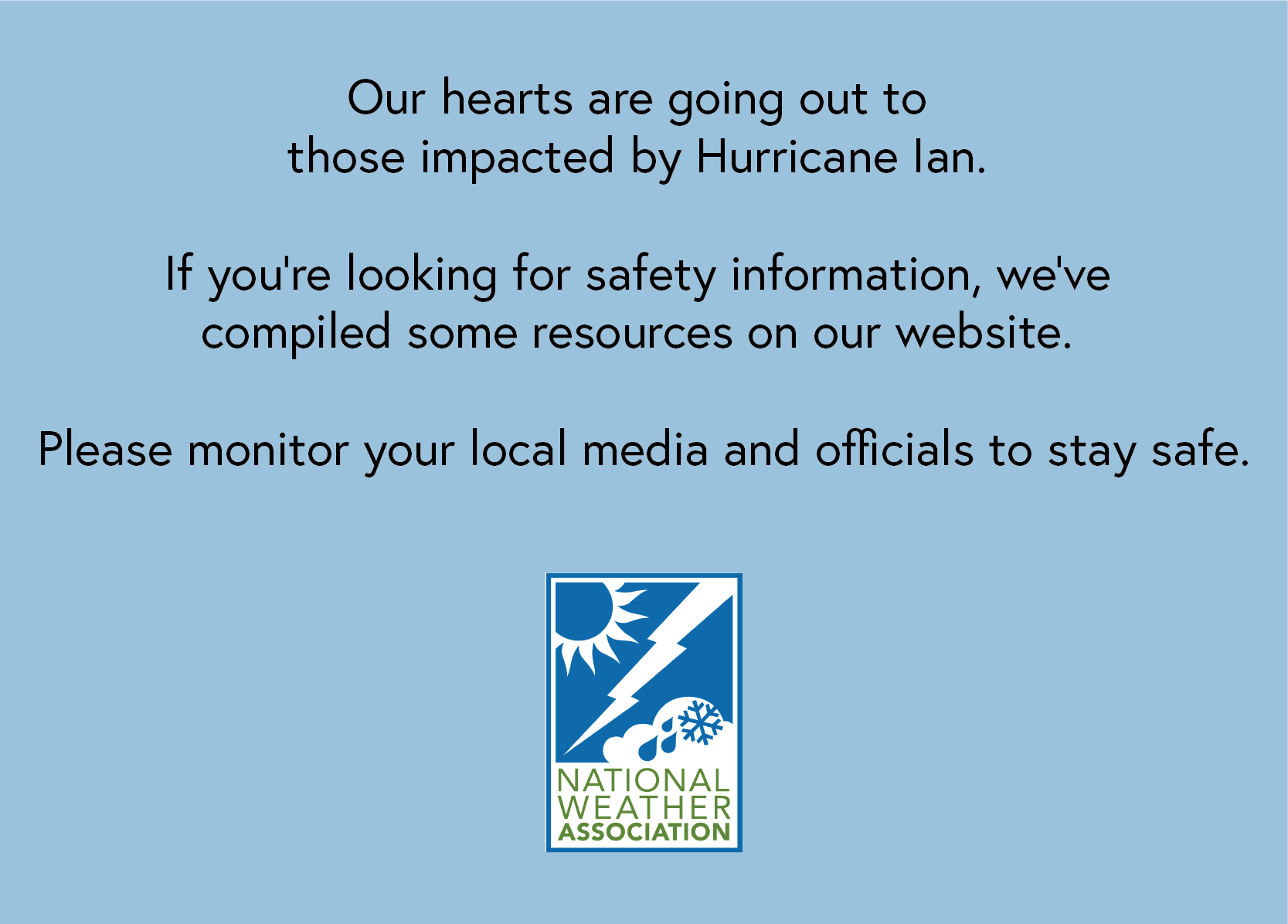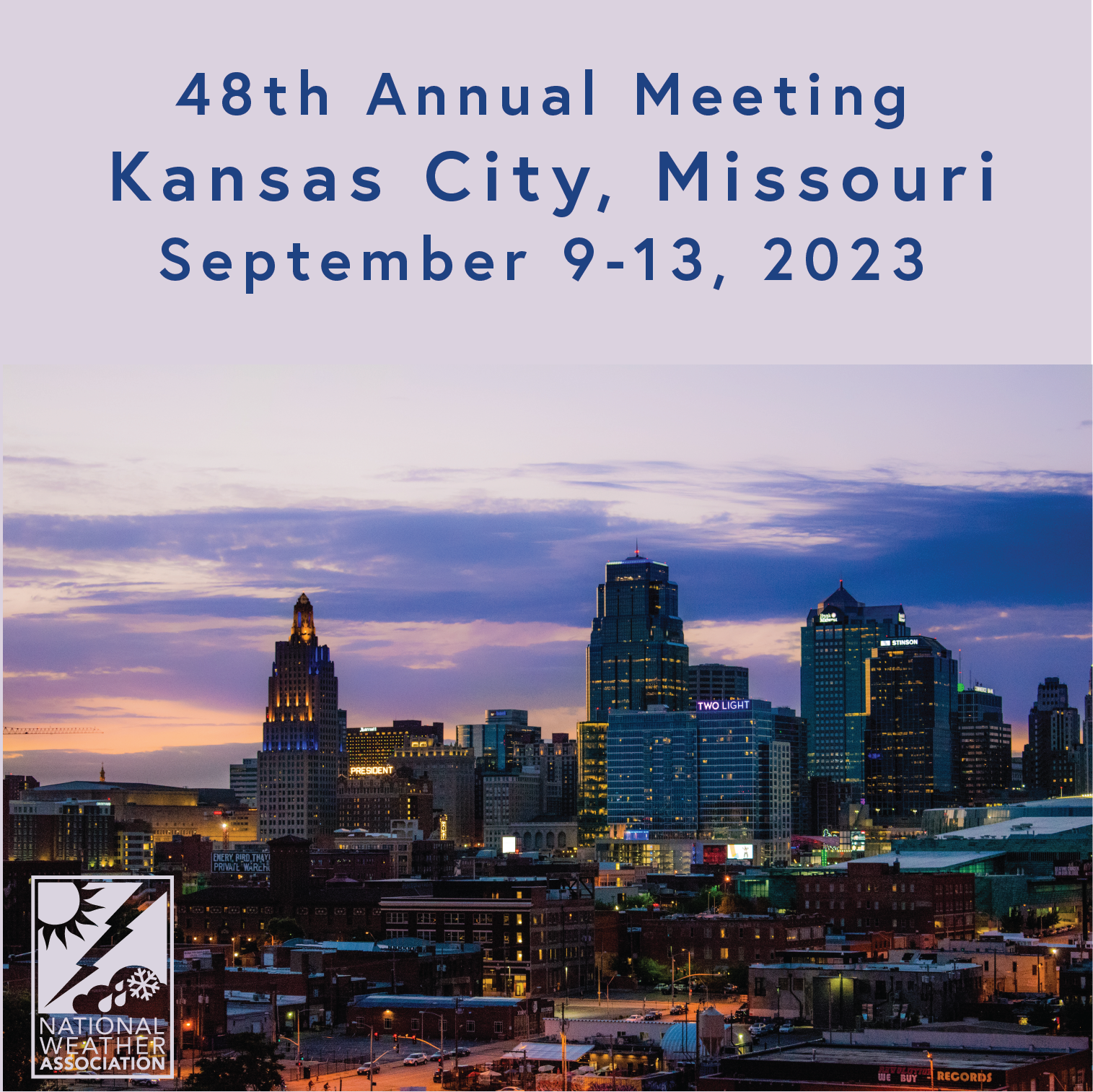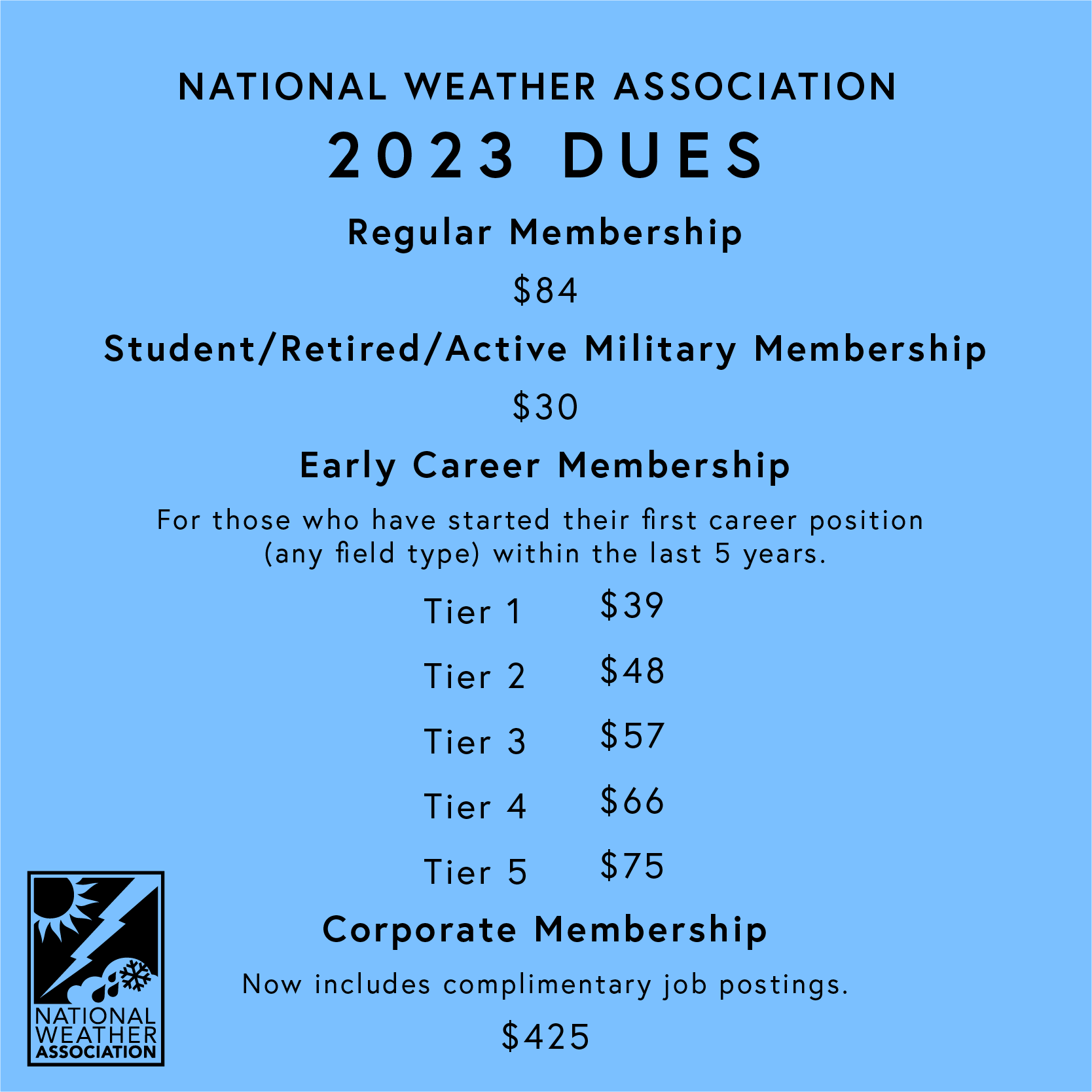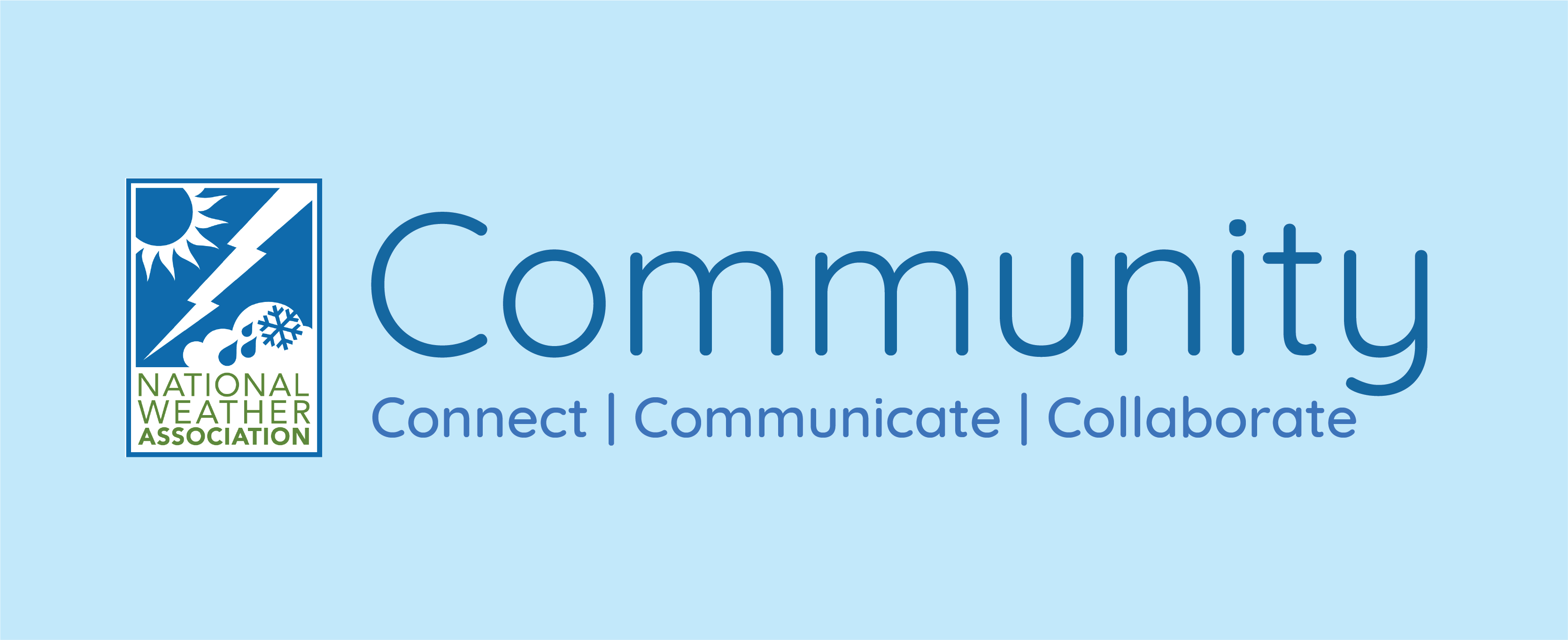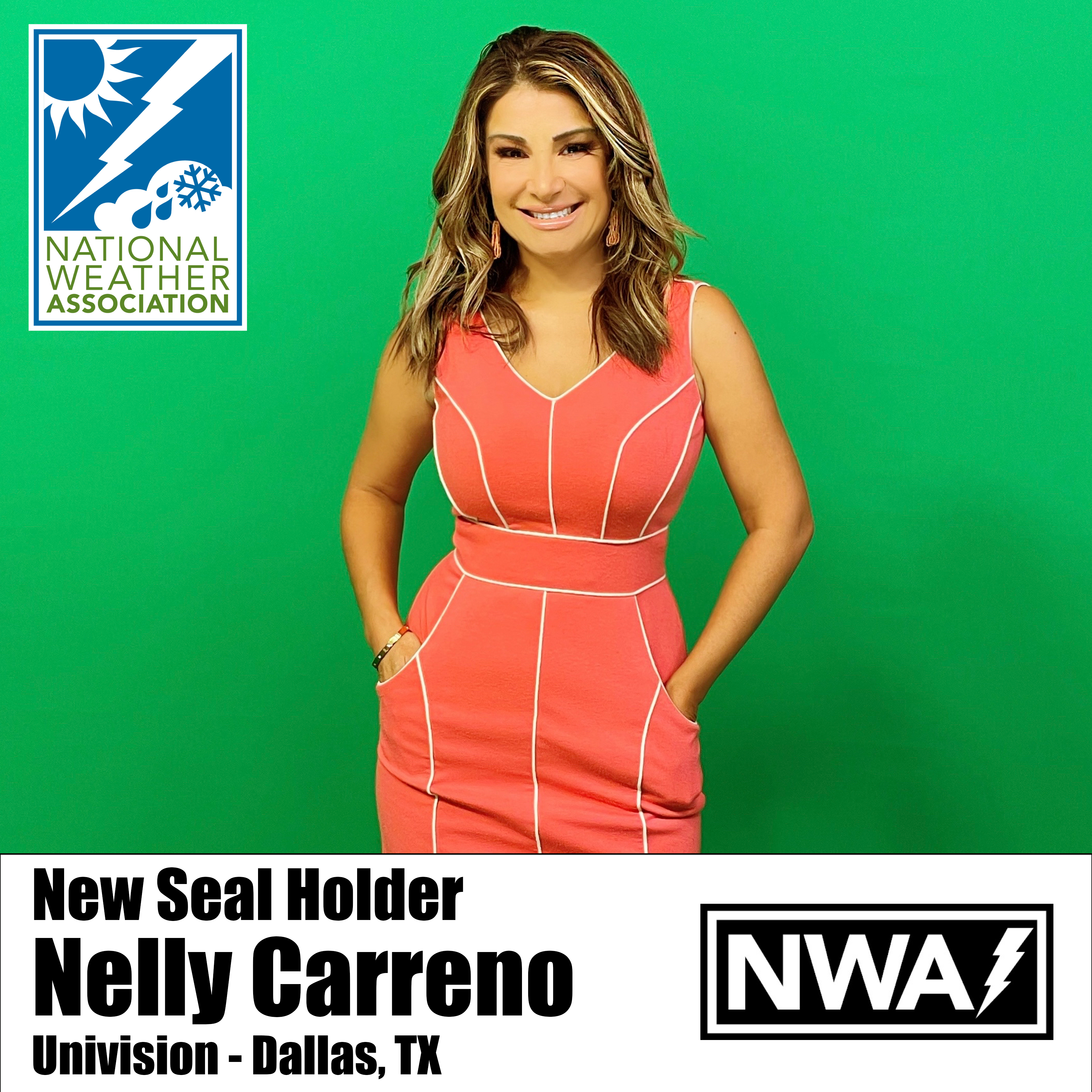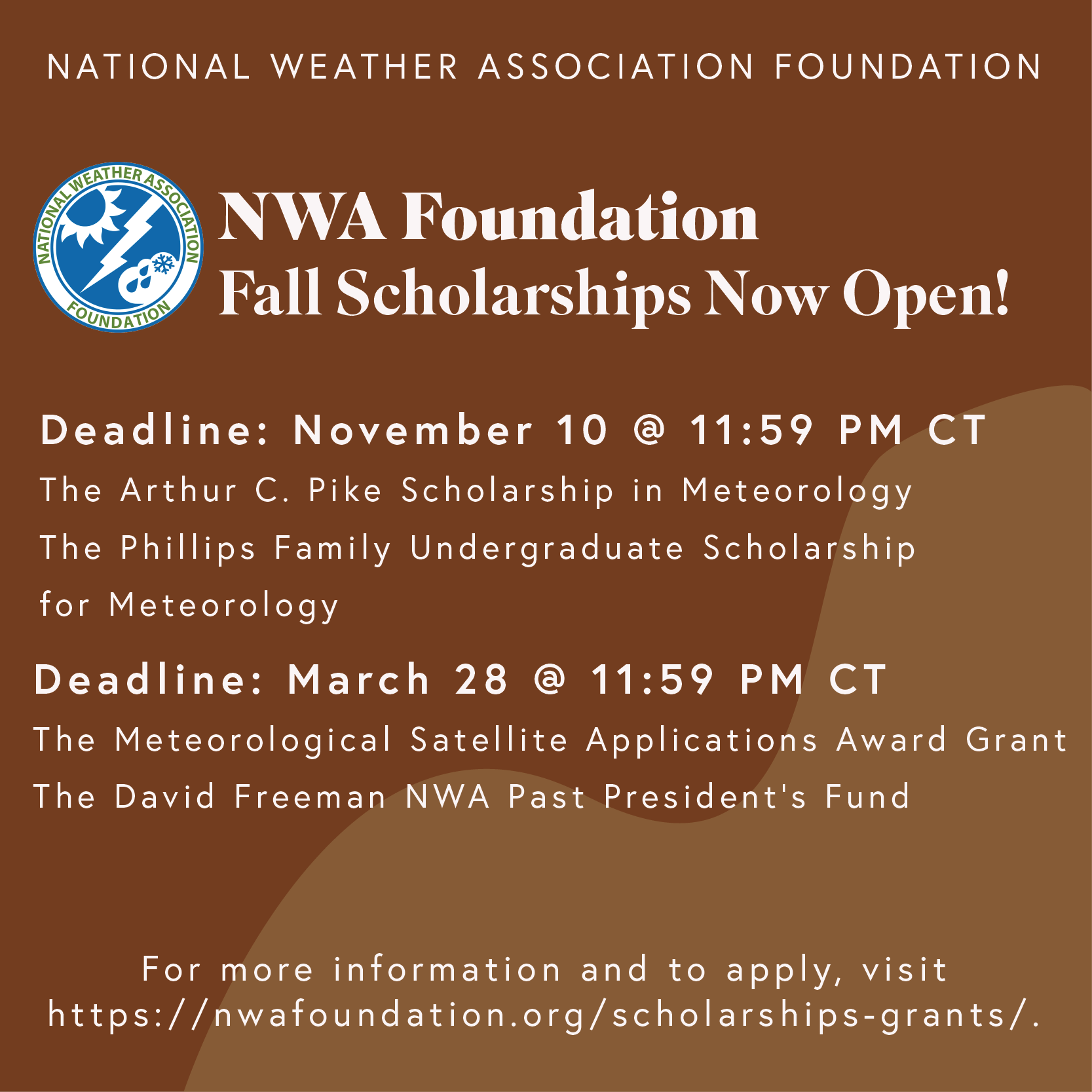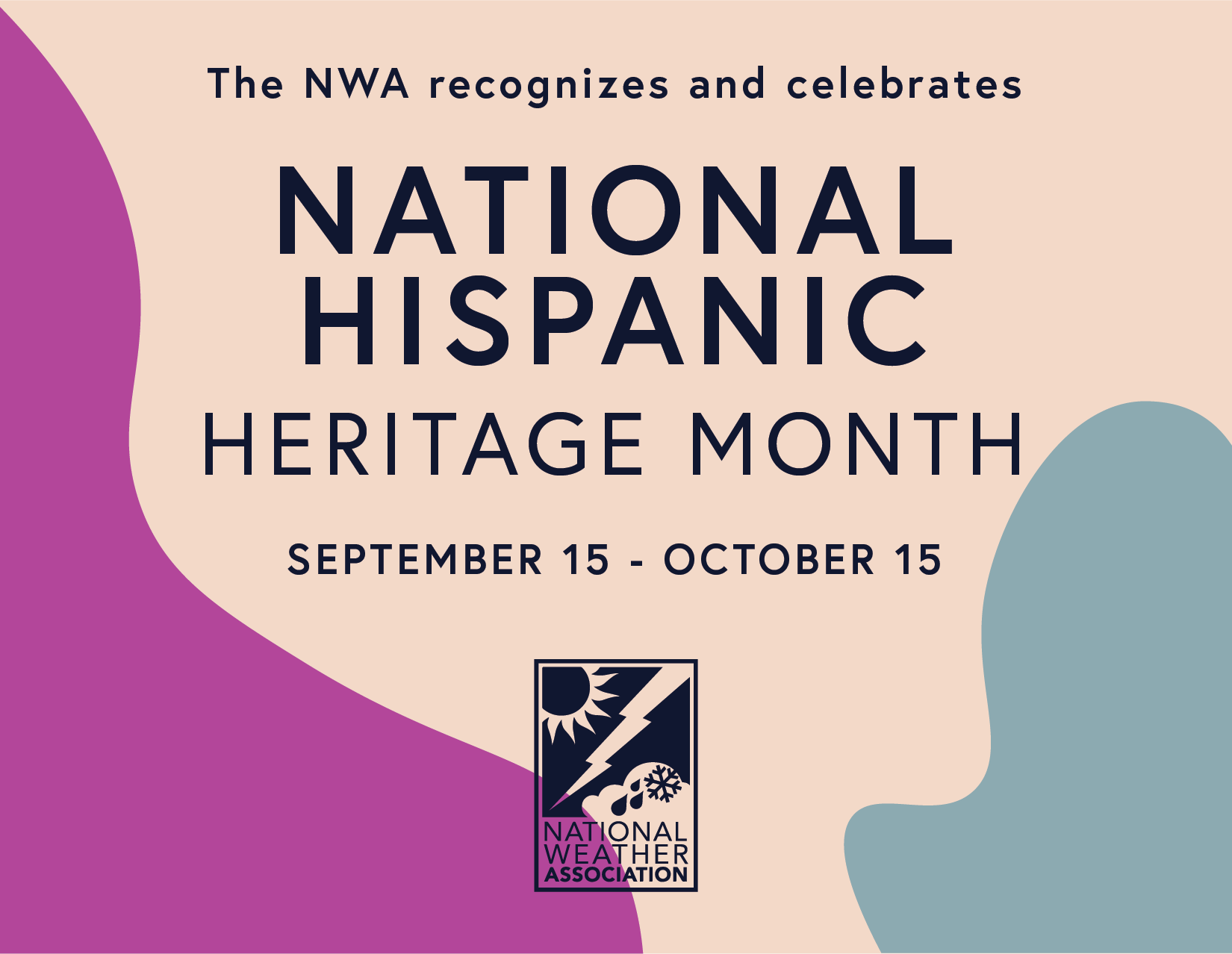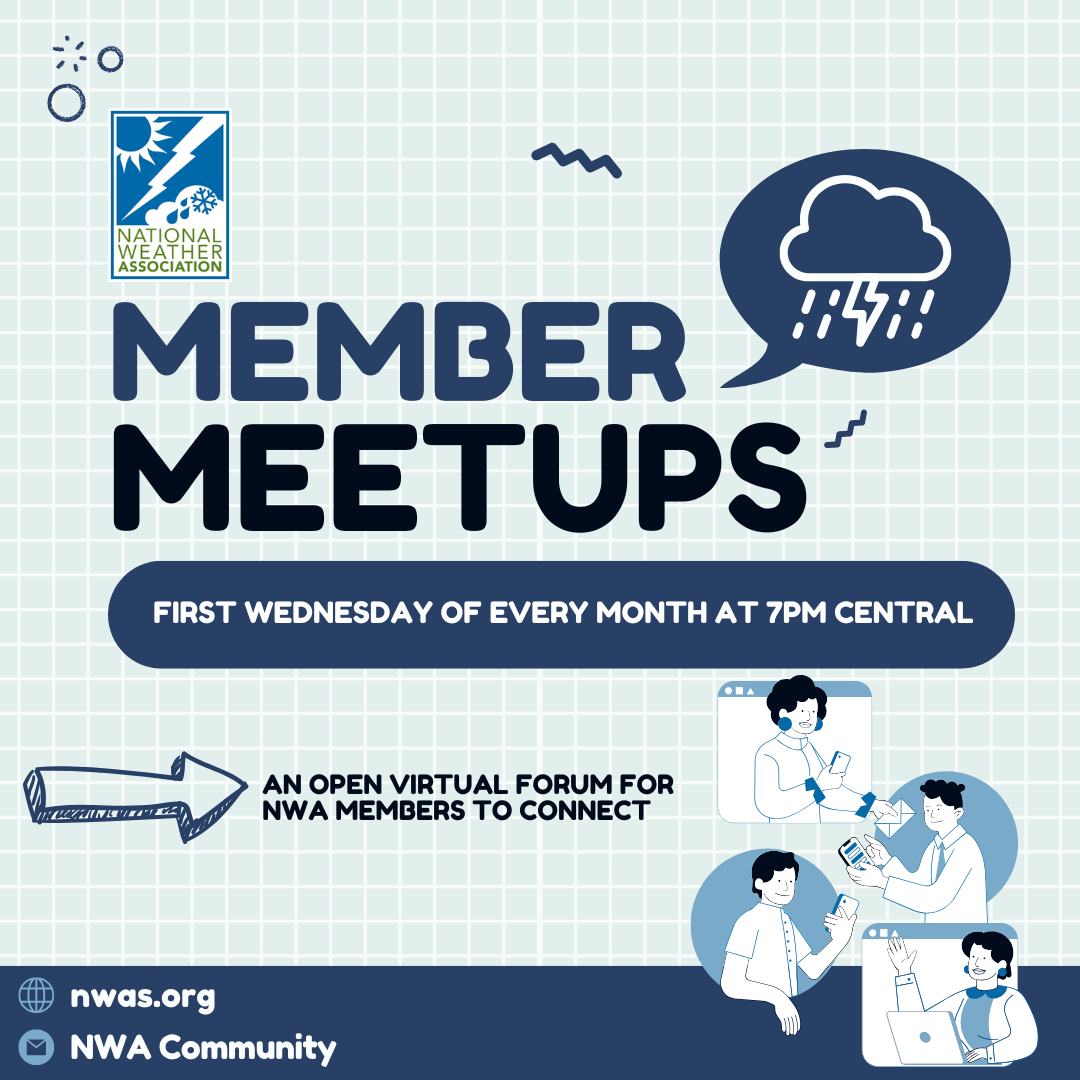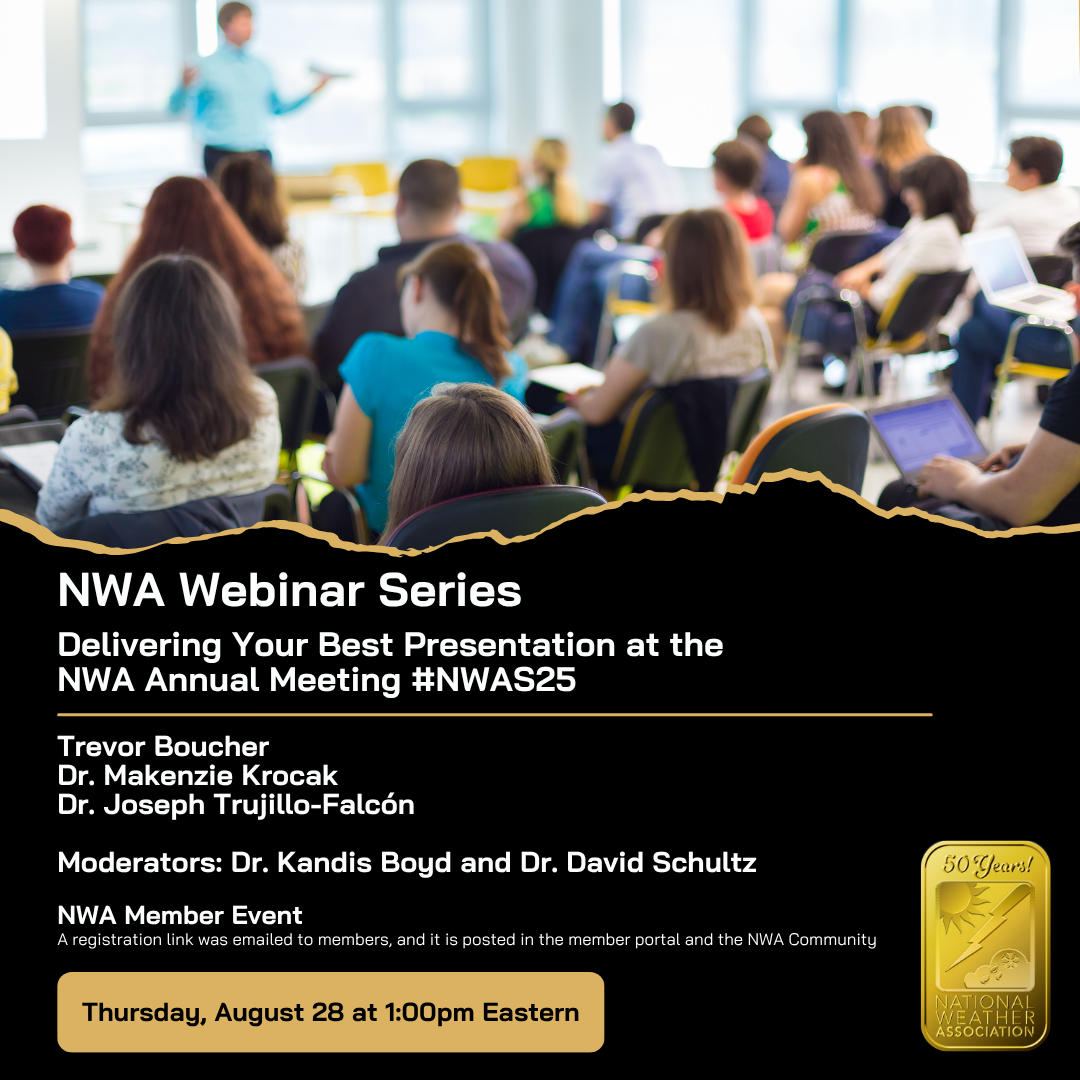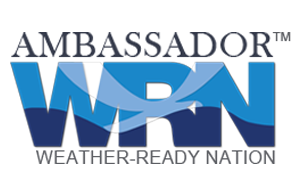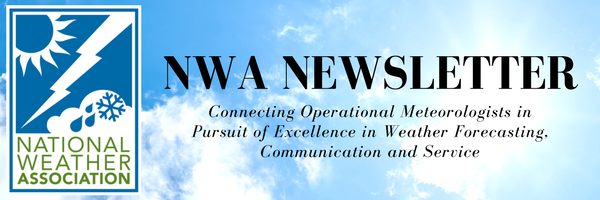 What's in this newsletter:
President's Message President's Message To help us understand this issue and how it affects NWA members, I recently posed some questions to two experts, both of whom have been instrumental in helping to advocate for the weather, water and Earth science community—Renee Leduc and Jordan Gerth. Renee Leduc is founder and principal at Narayan Strategy, a policy consultancy focused on weather and aerospace. Renee is also the recipient of the 2021 AMS Kenneth C. Spengler Award for her work on radio spectrum management issues. Dr. Jordan Gerth is a physical scientist at National Weather Service’s Observations Office and an honorary fellow at the University of Wisconsin–Madison Space Science and Engineering Center. He is also the chair of the American Meteorological Society Committee on Radio Frequency Allocations. Why should the weather community be concerned about this or why should they pay attention? As meteorologists who work in diverse roles across the weather enterprise, one commonality between us is a shared reliance on numerous observing technologies, from satellites to radiosondes to streamgages. One commonality between them is a reliance on a silent yet valuable resource that many of us don't think about very often–radio frequency spectrum. However, there is only a finite amount of spectrum available. Furthermore, it is increasingly important to numerous technologies in our lives, from cell phones to Wi-Fi, as well as sounding instruments, data buoys and radars. The increased demand for spectrum, and the importance of technology to national and global economies, has really increased the stakes for the meteorological community to continue to be able to use its required spectrum to sustain and advance Earth observations. An added reality is that spectrum has become so valuable to telecommunications that the FCC now auctions it, raising billions of dollars for the U.S. Treasury. NOAA, NASA, DoD and other federal agencies have been asked to consolidate their "footprint" of spectrum use to allow others to use the spectrum the agency has vacated –for example, when an auction last decade funded the redesign of radiosondes to operate from a different spectral area. However, the meteorological community cannot easily redesign and redeploy its environmental satellites in orbit. In addition, key inputs for numerical weather prediction come from "passive sensing bands" that, for example, measure the movement of water molecules in the atmosphere. Those spectrum bands can't be moved. And, if there is interference, the information is lost. What do you think are the potential solutions for the next five years? There are not easy, immediate solutions, in part because satellite missions typically take five or more years to design and launch, and technological demands for high-rate wireless connections are only increasing as the number of connected devices and applications increases. Spectrum conflicts are likely in the next five years and beyond. As excellent science communicators, NWA members can help inform the public about the value of radio spectrum for meteorology. People are curious about 5G. We can channel that curiosity into fact-based reporting on the value of spectrum for important societal benefits. Radio spectrum is –weather satellite data are –the basis for accurate mid-range weather forecasts. This is not just one band, one conflict, or one issue and there is a risk that weather forecasts may be less consistent if interference becomes widespread in American cities, or other cities around the globe. What would you recommend to NWA members who want to do something about this issue? As demand for spectrum increases, it becomes more and more important to clearly quantify and communicate the value of weather forecasts. We need to share our knowledge with policymakers, government officials and our communities about why spectrum-reliant weather technologies are critical to save lives, property and economies from severe weather, floods, wildfires and many other hazards. What can we do as meteorologists? Get involved. Do you have a specific weather technology that relies on spectrum that is critical to your job? Do you have a specific experience where a specific technology or observation was crucial in a hazard situation and made all the difference? These stories matter and can really help to educate policymakers on highly technical spectrum allocation issues. If you have an idea for a story, drop an email to Renee Leduc at [email protected] and she can work with you to get it assembled and used by the weather enterprise to clarify why spectrum is so crucial to weather forecasting. For more information about this issue, you can watch Renee’s presentation from this year’s NWA meeting in Pittsburgh, as well as interviews with Renee and Jordan, conducted by Betsy Kling at the 2021 NWA meeting in Tulsa. Here is the NWA's stance on 5G. Hurricane Safety and Recovery Resources
The NWA has compiled a list of resources to better protect yourself and others during a hurricane. 2023 Meeting Location Announcement Visit our website for more information. 2023 Membership Dues Increase In 2019, the NWA decided to slightly increase membership dues each year to cover increasing costs associated with running the association. Then, COVID happened. The decision was made to forego dues increases in 2020 and 2021, because many were dealing with uncertainty related to COVID impacts. Dues for 2023 will be increased for most members, and smaller increases will be implemented yearly after that. Student, full-time retired, and active military members will not see dues increase. A new community platform will be available to members very soon. We are in the final stages of testing it and finalizing legal requirements. This will allow members aged 18 and above to network and discuss topics of shared interest. NWA members have embraced the discussion groups on the annual meeting app Whova, so we are excited to make these options available year-round on the new platform. Corporate members have their company name included on the NWA website, receive discounts on exhibit booths at the annual meeting, and they will now receive complimentary job postings on the NWA Jobs Corner. It has become a popular board to post job openings and internships. Membership renewals will be available in November. Watch your email for the renewal invoice. The emails will be sent from [email protected]. Thank you for your membership! We look forward to continuing to serve you in 2023. Janice Bunting
Coming soon: NWA Community! This new platform lets members interact with other members and access the latest NWA happenings. We will be launching soon, so stay tuned!
What sparked your interest in meteorology? What is the most memorable weather event you have covered on air? What do you love to do in your free time? Do you have any unusual/hidden talents? What do you love most about being a member of the NWA? Connect with Nelly on Twitter: @NellyCarrenoTV
Visit the NWA Foundation page for more information. Please share this opportunity with any relevant candidates. Lightning Fatality Statistics 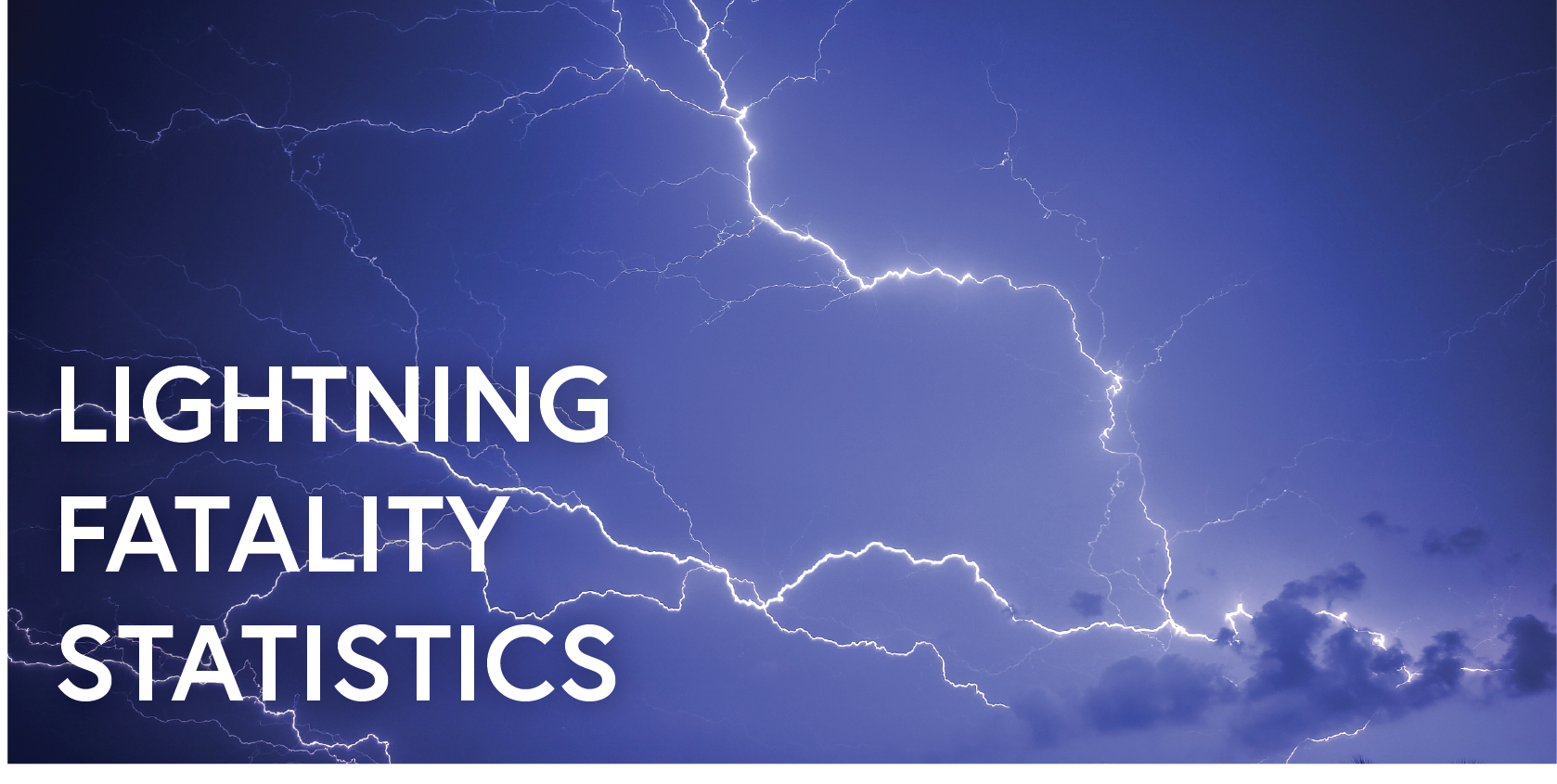 In the past month, lightning fatalities in 2022 have jumped up to 19. From John Jensenius at the National Lightning Safety Council: Sadly, I learned today that a second child has died from the crew/rowing incident on Thursday evening, September 15th, at a lake near Orlando, Florida. Both boys were part of a 5-person crew team. This is the 19th lightning fatality of the year in the U.S. and the 4th in Florida. Based on the past 10 years, the U.S. averages 23 lightning deaths through September 24th. Florida typically leads the nation in lightning fatalities. Since 2006, Florida has seen a total of 83 lightning fatalities including the four this year. There have been 23 boating-related lightning fatalities since 2006, including four this year. Boating is one of the leading activities that contribute to lightning deaths. While we don't track the number of multiple fatality events each year, it is unusual to have three incidents with multiple fatalities in a year. (August 4th, September 4th, September 15th) 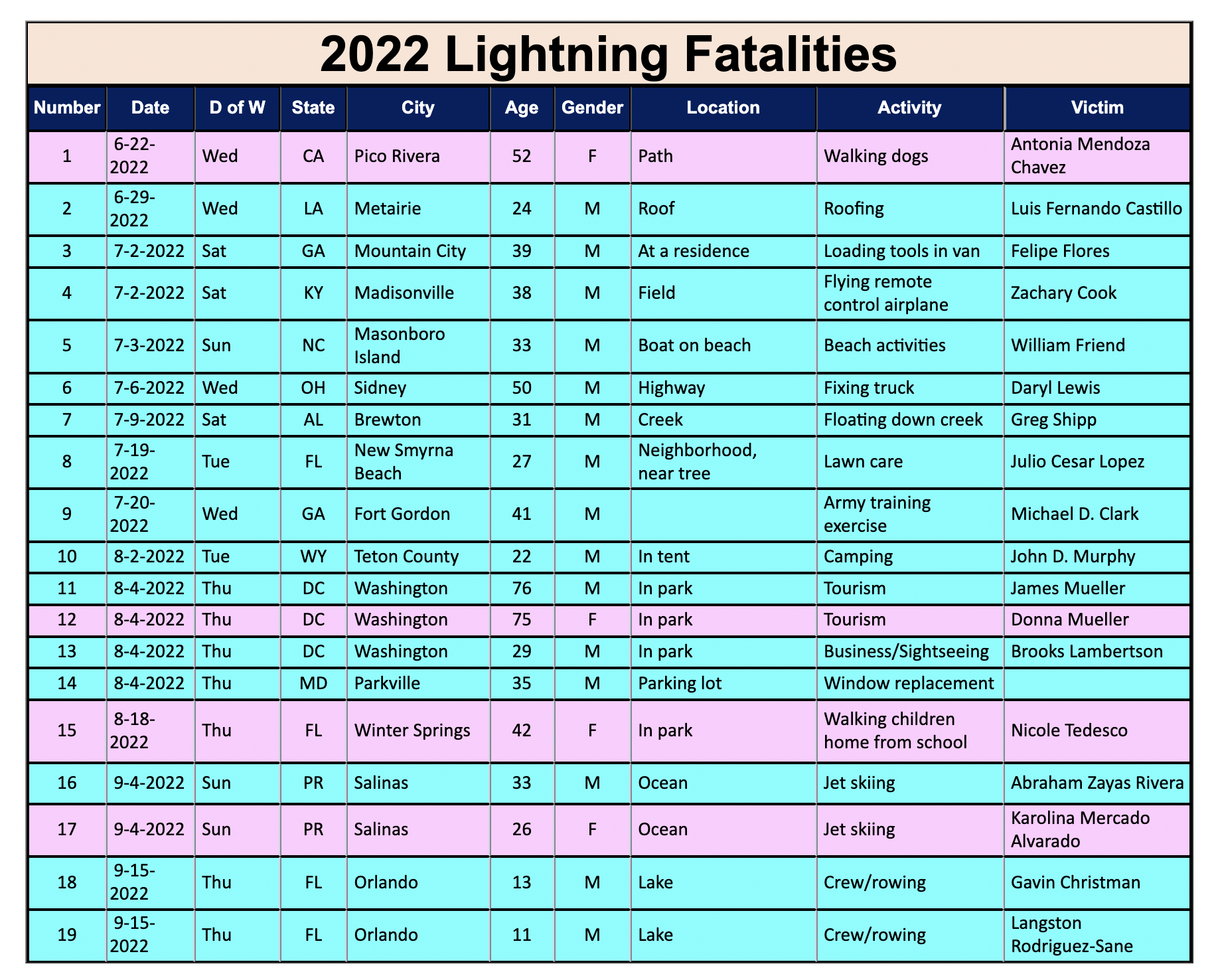
High Plains NWA/AMS Chapter Minutes The NWA/AMS High Plains Chapter held a virtual meeting over Google Meet on Wednesday, September 14th and began around 1100AM. There were a total of 16 chapter members that were able to attend. The meeting started off with Jeremy Martin mentioning we should be able to have the next meeting in person due to COVID restriction being reduced. Everyone was in agreement and hopefully the next meeting will be in person. Next topic of discussion was about the next High Plains Conference. North Platte will be in charge of planning for this conference. Possible dates for this conference would be middle to end of September or early spring. More discussion will be needed to set a date for the conference. Jeremy then talked about the Jim Johnson Scholarship and how each office needs a member to help out with submissions from students for the scholarship. If you are interested please let one of the officers know you are interested in helping out. It was also brought up that dues are still needed this year for many members. The last topic of discussion was officer nominations for President, Vice President, and Treasurer. The Webmaster and Secretary will remain the same for this year. As for nominations, Jeremy Wesley was put up for President, William Taylor for Vice President, and Katy Shawkey or Amanda Wekesser for Treasurer. Jeremy will soon be sending out an e-mail to vote for these positions. The meeting then came to an end around 1130AM. The next High Plains chapter meeting is expected to be in the next month or two and hopefully in person. Jeremy Martin Wesley Hovorka COMET Quarterly Announcement, Summer/Fall 2022 Greetings from Boulder, Colorado! This quarterly update contains an extra-large addition of COMET materials, a total of 11 new MetEd lessons have been published since our last update in March. The new lessons cover a variety of topic areas, such as communicating subseasonal to seasonal impacts (three lessons, focused on climate change, climate-weather interactions, and drought), satellite image analysis (microwave analysis of tropical cyclones, and a case exercise using GOES-R/JPSS imagery in heavy rain and flash flood situations), aviation forecasting tools, quality control of water level data, air quality forecasting, hydrological forecasting, and probabilistic forecasting. A total of five new lessons were also published in Spanish, as well as one lesson in French. All of us at COMET thank you for continuing to use our training materials! ------------------------------------------- New COMET Lessons in English Meteorological Analysis and Forecast Tools for Aviation What is the Hydrologic Ensemble Forecast Service (HEFS)? Communicating Probabilistic Forecasts Communicating Subseasonal to Seasonal Impacts: Drought Communicating Threats and Impacts During Tsunami Events Communicating Subseasonal to Seasonal Impacts: Climate Change Working with Water Level Data: QA/QC Communicating Subseasonal to Seasonal Impacts: Climate-Weather Interactions Microwave Analysis of Tropical Cyclones, 2nd Edition Air Quality Forecasting Case Study: British Columbia Smoke Event GOES-R/JPSS Case Exercise: Applications for Heavy Rainfall & Flash Flooding New COMET Lessons in Spanish Comunicar los impactos subestacionales a estacionales: interacciones clima-tiempo Pronóstico y comunicación de las precipitaciones locales de los ciclones tropicales Teledetección por microondas: descripción general, 2ª edición Análisis de ciclones tropicales por microondas, 2ª edición Precisión y exactitud en levantamientos geodésicos New COMET Lesson in French Étude de cas sur la prévision de la qualité de l'air : Évènement de fumée en Colombie-Britannique Currently, these materials are freely available to everyone, courtesy of our primary sponsors. Our sponsors include NOAA's NWS, NESDIS and NOS programs, EUMETSAT, the Naval Meteorology and Oceanography Command, the Meteorological Service of Canada, Bureau of Meteorology, the USACE, DOI/Reclamation, and the World Meteorological Organization. Sincerely, David Russi
From The Library of Congress's Hispanic Heritage Month Website: Each year, Americans observe National Hispanic Heritage Month from September 15 to October 15, by celebrating the histories, cultures and contributions of American citizens whose ancestors came from Spain, Mexico, the Caribbean and Central and South America. The observation started in 1968 as Hispanic Heritage Week under President Lyndon Johnson and was expanded by President Ronald Reagan in 1988 to cover a 30-day period starting on September 15 and ending on October 15. It was enacted into law on August 17, 1988, on the approval of Public Law 100-402. The day of September 15 is significant because it is the anniversary of independence for Latin American countries Costa Rica, El Salvador, Guatemala, Honduras and Nicaragua. In addition, Mexico and Chile celebrate their independence days on September 16 and September18, respectively. Also, Columbus Day or Día de la Raza, which is October 12, falls within this 30 day period.
November August 2023 Have you checked out our job page recently? We update the job postings as they arrive, and they've been arriving more frequently. Check out the newest job postings or submit a job posting here.
National Weather Association | 3100 Monitor Ave, Suite 123 | Norman OK 73072 | 405.701.5167 Publisher: Janice Bunting, NWA CEO Submit newsletter items to [email protected] |
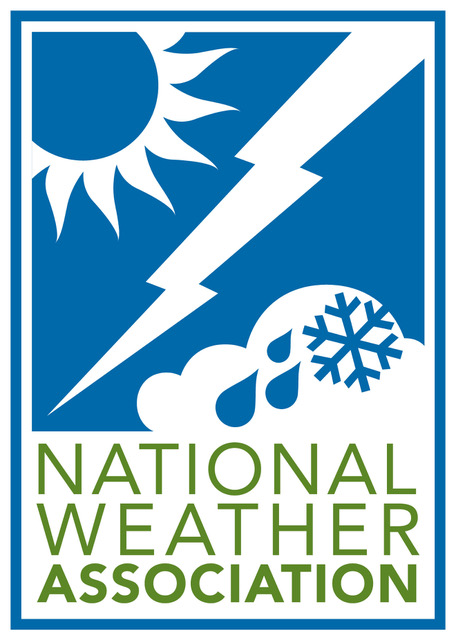

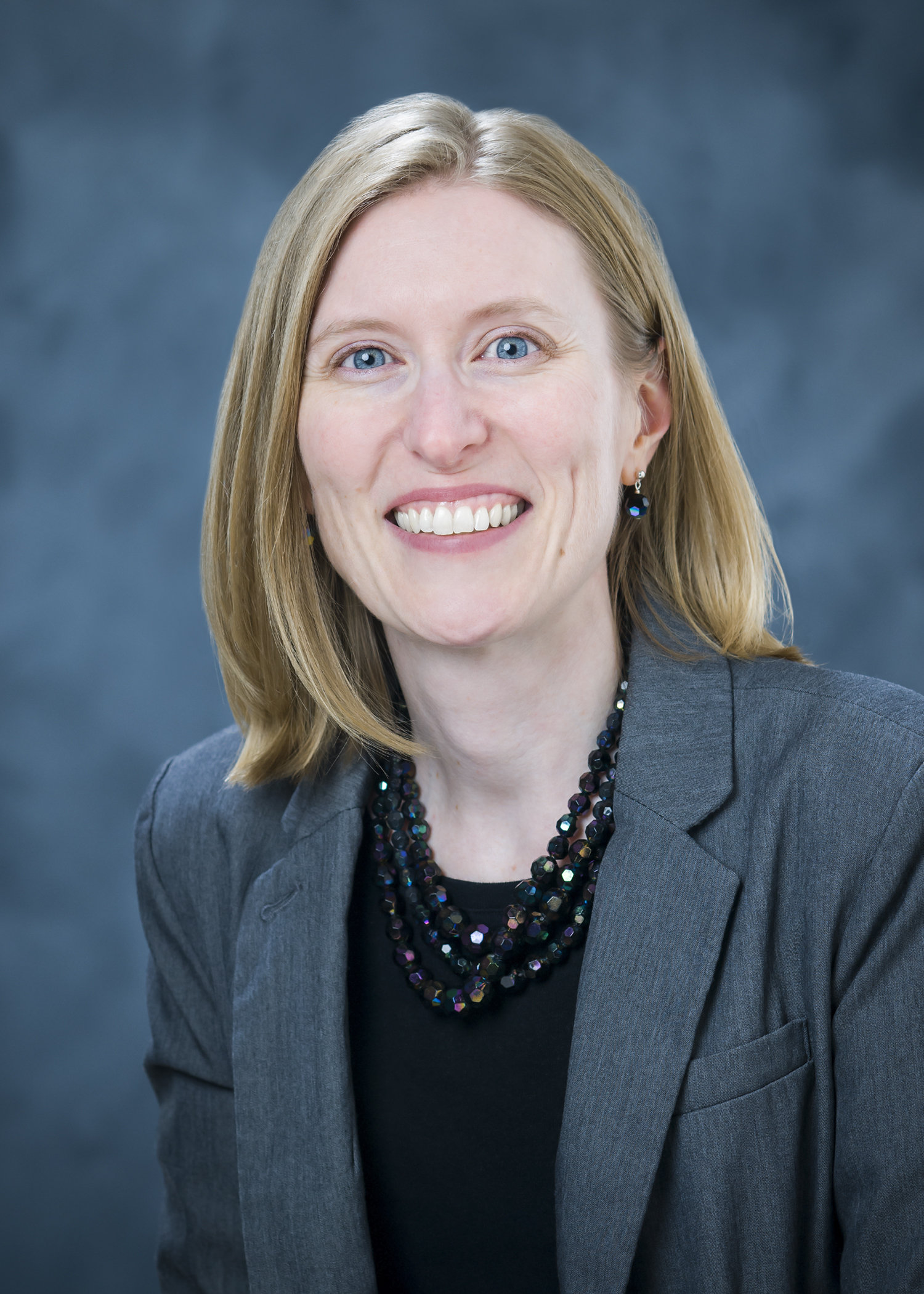 Earlier this month, the National Weather Association joined 12 other weather, water and Earth science organizations in filing a comment with the Federal Communications Commission (FCC) to urge them to vacate efforts to proceed with final rulemaking to share the 1675-1680 MHz radio spectrum with NOAA’s GOES-R series satellites. The NWA also joined our colleague organizations to call for a stay to the April 2020 FCC decision authorizing operation of a terrestrial radio network near GPS. This is not the first time we have written to the FCC and Congress on these topics. The NWA previously signed on to letters to Congress and to President Biden in April 2021 and 2022.
Earlier this month, the National Weather Association joined 12 other weather, water and Earth science organizations in filing a comment with the Federal Communications Commission (FCC) to urge them to vacate efforts to proceed with final rulemaking to share the 1675-1680 MHz radio spectrum with NOAA’s GOES-R series satellites. The NWA also joined our colleague organizations to call for a stay to the April 2020 FCC decision authorizing operation of a terrestrial radio network near GPS. This is not the first time we have written to the FCC and Congress on these topics. The NWA previously signed on to letters to Congress and to President Biden in April 2021 and 2022. 